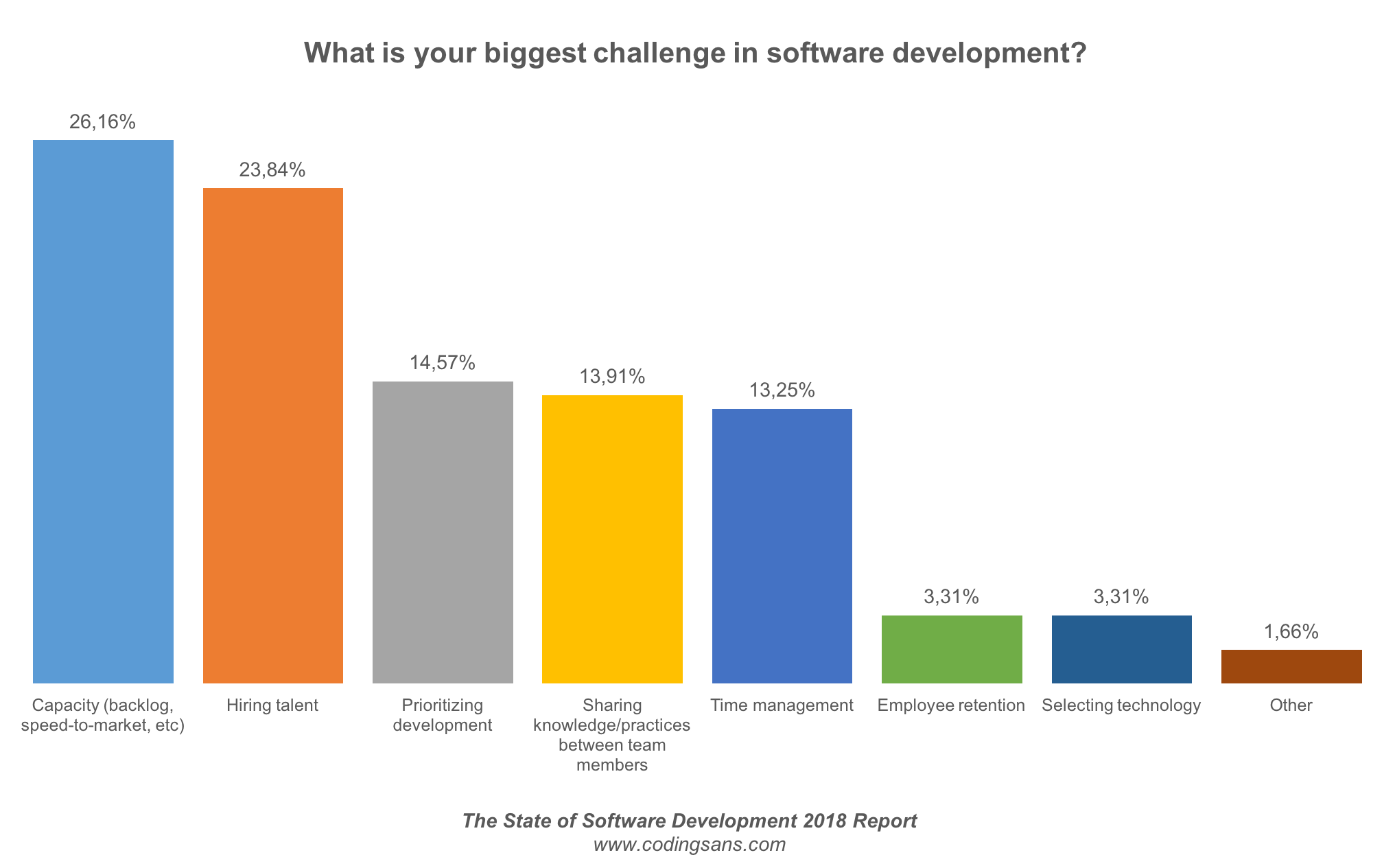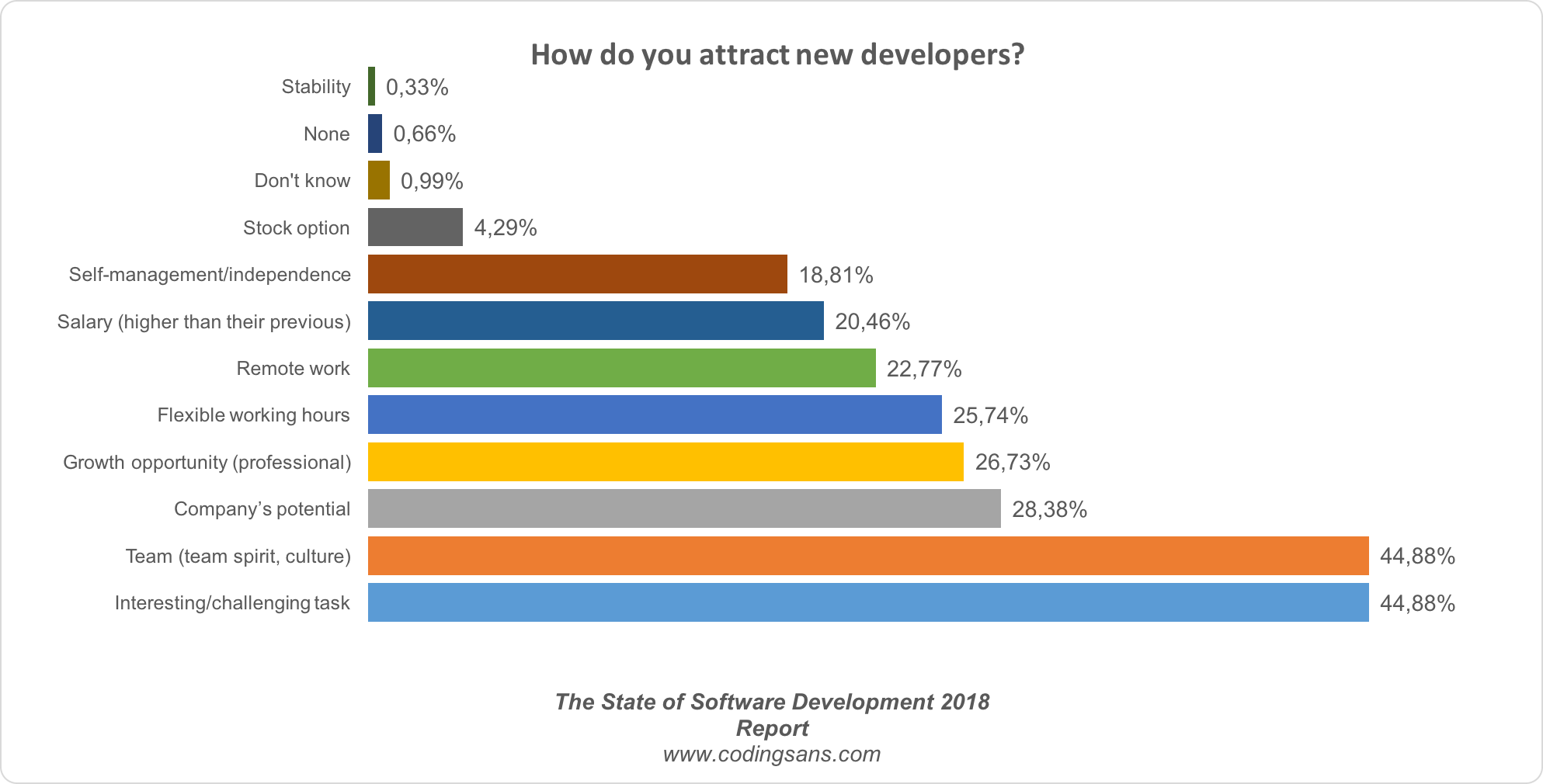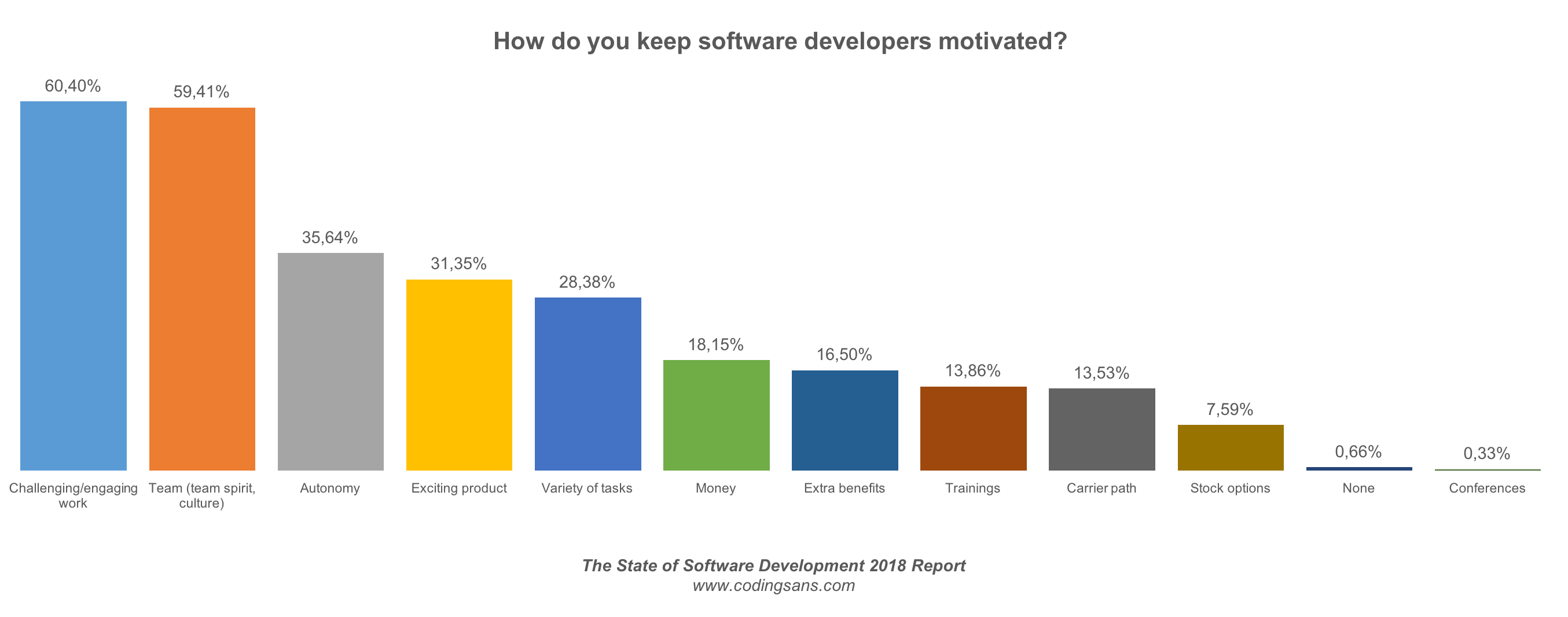There is huge competition for talented developers.
As a developer or tech lead, you have probably experienced this by receiving countless offers through LinkedIn or personal recommendations.
Hiring new developers is hard. There aren’t enough developers on the market, and you’re competing for talent with big tech companies such as Facebook and Google who have much bigger resources.
It’s not surprising that the biggest challenge tech leaders face is hiring talent, according to the State of Software Development 2018 report.

So, what can you do?
In this post, we share how to attract and retain software developers based on the latest software development report, and we show you some practical tips to apply.
Step 1: Finding talent
Hiring eats up a lot of time and energy.
In the State of Software Development 2018 report, we asked tech people about the most effective methods for hiring developers.

It’s interesting to see the difference between big and small companies. Small companies (<20 employees) tend to rely on employee referrals and personal networks or they don’t have any specific method for hiring or haven’t hired software developers yet.
Big companies (>100 employees) tend to hire an in-house recruiter and rely on employee referrals.
How to run an effective employee referral program:
If you have a really great company culture with satisfied employees, they are the best advocates of your company to refer talented developers. They can answer every pressing question a new candidate wants to know, so it comes from a trustworthy source, from right inside the company.
So, how do you make an employee referral program work? It needs to meet the following requirements:
- Great company culture
- Great referral rewards (money, tickets, bonuses, anything that resonates with your employees)
- Give a reward after all relevant, quality candidates (not just the ones who are hired on)
Advantages:
- Employees do the heavy lifting to find candidates
- Referred employees are more engaged
Disadvantages:
- You can’t start a referral program without employees
- You should pay for a successful referral
- Could be hard to incentivize employees to refer someone
Learn about the renowned engineering culture of Monzo! [Podcast + Blog post]
Some tips for getting employees through your networks:
You can also capitalise on your own professional network. It’s not only effective, but the quality of applicants is much higher since no one wants to refer a bad developer to risk his own reputation.
One of the simplest ways to go through your network is by using LinkedIn. See developers in your network and shoot them a message. If they’re not open for new challenges, ask for a referral. Chances are they have a developer friend who is looking for a job and could be a good fit.
Also, reach out to people who probably work with developers or have an extensive network of developers.
If you have a small network, there is only one solution: grow it. Locate meetups, conferences and other events where developers hang out. There are many of them; just check out meetup.com.
Advantages:
- Efficient way to find developers (if you have a relatively large network)
- Quality of the applicants is usually higher
Disadvantages:
- Takes time and effort to extend your network
Step 2: Convince developers to join
Finding talent is one thing; convincing them to work for your company is another. The report showed how tech companies attract new software developers.

Interesting/challenging task and team (team spirit, culture) are the top incentives to attract talent. Interestingly, salary increase isn’t even in the top 5.
If you want to make your company more attractive for developers, try to focus on the professional challenges the job offers and make your team culture more attractive. This is the hardest part; transforming a company culture is definitely a long shot. You can also articulate your company’s potential and the professional growth opportunities it offers.
Step 3: Keeping developers motivated
Hiring new developers eats up a lot of time and energy. If you struggle with high fluctuation, this is the first thing you need to fix. It doesn’t make sense to pour water into a leaking bucket.
Here is what you can do to decrease fluctuations:
You need data to figure out why your developers are leaving your company or what your current team members are unsatisfied with. This could be through anonymous interviews or exit interviews.
Without data, finding real issues is really hard. It’s like playing golf in the dark and hoping to score. You need to know what your developers think. Having some tips and a hypothesis a good start, but it is not enough to address the real problems.
How do tech companies keep software developers motivated?
The methods applied here are pretty similar to the ones for attracting developers. The top 2 methods are challenging/engaging work and team culture. These are not only important for attracting developers but also key to retaining them longer in your team.

Conclusion
This post uncovered some fresh data helping you benchmark yourself against other tech companies.
The most effective methods to hire talent is through employee referrals and networking. Small companies rely more on employee referrals and networking than big companies where they usually have an internal recruiter.
According to the report, the most effective ways to attract and retain talent is through interesting/challenging tasks and great team spirit.
Even though this report uncovered the most popular ways to hire, attract and retain developers, you need to tailor your methods to your team. It’s especially true for motivating developers. Take a data-driven approach and figure out what your developers are dissatisfied with and address those issues to keep them longer.


